Research Article 
 Creative Commons, CC-BY
Creative Commons, CC-BY
GC-MS Analysis with Antimicrobial Activity Study of Cymbopogon Citratus Leaves Essential Oil Towards the Multi-Drug Resistant Nosocomial Clinical Isolates of Proteus Vulgaris
*Corresponding author: Muazzam Sheriff Maqbul, Department of Microbiology and Immunology, Ibn Sina National College for Medical Studies, Saudi Arabia.
Received: February 25, 2022; Published: March 11, 2022
DOI: 10.34297/AJBSR.2022.15.002153
Abstract
The Cymbopogon citratus leaves were popularly known as the Lemon grass leaves in the form of its aromatic tea as an ancient tradition providing soothing flavor aiding in the treatment of many ailments especially the respiratory tract infections due to the release of essential oils in the tea while boiling. The fresh Lemon grass leaves of Cymbopogon citratus were procured from the local hypermarket from Jeddah, Kingdom of Saudi Arabia and the essential oils were extracted by the European Pharmacopoeia methodology of employing Clevenger-type apparatus. The Gas Chromatography-Mass Spectrometry analysis for the Cymbopogon citratus leaves essential oil was performed by the creating the compound creation examination of qualitative and quantitative analysis of the extracted essential oil from the leaves were by deploying a Hewlett Packard 5890 Series II gas chromatograph outfitted with a flame Ionization Finder (FID) and a slim HP-5 section. The multi-drug resistant clinical isolates Proteus vulgaris were procured from the nosocomial patients by following the standard microbiological isolation and purification technique protocol.
The same standard protocol was deployed for the standard strain of the Proteus vulgaris. The standard antibiotic qualitative method of Kirby-Bauer disc diffusion method along with the standard quantitative methods of minimal inhibitory concentration and minimal bactericidal concentration test protocol were deployed towards both the multi-drug resistant clinical isolates Proteus vulgaris and standard strain of the Proteus vulgaris to investigate the efficacy of the standard antibiotics with that of the essential oil. The procured test results were recorded and compared which shown exceptional test results for the study which proved the necessity for carrying such investigations to bring the hidden facts to the limelight regarding the alarming rise in the multi-drug resistant variants which could have been controlled by the proper implementation of the standard available tests to choose a specific antibiotic for a specific infection instead of broad-spectrum drug. This study also shows the importance of naturally abundant essential oils in combating even the multi-drug resistant pathogens.
Keywords: Cymbopogon Citratus Lemon Grass Leaves, Essential Oil, Proteus Vulgaris, Multi-Drug Resistant, GC-MS Analysis, Antimicrobial Activity, MDRPV, Nosocomial Isolates, Oils, Lemon Grass, Traditional Ancient Herbal
Abbreviations: MDRPV: Multi Drug Resistant Proteus Vulgaris, MRSA: Methicillin Resistant Staphylococcus Aureus, GC-MS: Gas Chromatography-Mass Spectrometry
Introduction
The Lemon grass leaves variety which is the native of southeast Asian continent being popular in the form of its aromatic herbal tea rich in essential oil being consumed on regular basis as a traditional ancient herbal drink for its soothing flavor which also helps in solving many ailments without the knowledge of many. Besides the rich aromatic flavor of this herbal tea, it also possesses several important chemical components present in its essential oil which is being released while boiling the leaves of this lemon grass [1,2]. The phytochemical components present in the essential oil released from this herbal tree provides a vital antimicrobial component against many ailments. The antimicrobial properties of the essential oil released from the leaves of this lemon grass variety acts as good phenolic substance in eliminating the pathogens especially from the respiratory system. for asthma, headache, coughs, and colds, etc., [1,3]. Besides the respiratory ailments, the essential oil derived from this lemon grass leaves were useful against other ailments such as stomach, cramps, flatulence, indigestion, treat wounds and swollen glands, etc., [4,5].
The essential oil present in the leaves of this lemon grass variety not only serves as an aromatic flavored herbal drink but also resolves many ailments without any side effects which makes these types of herbal medicine as a natural boon to the mankind to treat several diseases naturally without seeking the need for the chemical solvents. The forgotten past of the ancient medicinal therapies needs to be resurrected by exploring and ploughing the available natural medicine form the herbal source [6,7]. This research was an effort to study the Phyto-chemical components present in the essential oil of this lemon grass variety by Gas Chromatography-Mass Spectrometry analysis and to analyze its antimicrobial efficacy against the clinical isolates of Multi-Drug Resistant Proteus Vulgaris (MDRPV) which emerging as a potential threat to the mankind in the form of nosocomial hospital borne infection during prolong admission in the hospitals by person-toperson contact [8,9]. The emergence of this MDRPV is also due to the mishandling of the antibiotics due to the wrong prescriptions which is generally termed as antibiotic abuse in medical field.
This type of drug resistance arose when the antibiotic was given to the individuals without the proper investigations by the physician and the best example is MRSA variant which become potent threat due to antibiotic abuse. There were series of abundant studies regarding the antimicrobial activity of the essential oil of the lemon grass leaves of the Cymbopogon citratus plant were performed towards the respiratory infections of the Gram-positive cocci especially Streptococcus species infections and many studies were also performed towards Gram negative Enterobacteriaceae species. Hence, the focus of our study was to study the antimicrobial efficacy of this lemon grass variety essential oil towards one of the Gram negative Enterobacteriaceae member bacilli Proteus vulgaris but in a different perspective by selecting the clinical isolates of Proteus vulgaris only from the nosocomial multi-drug resistant variants to make the study more beneficial to the podium [1,10,11]. Hence, the findings of this study will be fascinating to determine the efficacy of the Cymbopogon citratus essential oil containing plenty of phyo chemical components released by the lemon grass leaves as an antimicrobial agent towards the MDRPV clinical isolates and the obtained results were assessed [2,10,12].
Materials and Methods
Requirements
The major requirements for the conduct of this study were Fresh leaves of Lemon grass of Cymbopogon citratus, Anhydrous sodium sulfate, Hewlett Packard 5890 Series II gas chromatograph, Cysteine Lactose Electrolyte Deficient agar plates, Mueller Hinton Agar plates, Nutrient liquid media, Peptone Water, Stuart’s Transport media, Sterile swabs, Inoculation loop, Test tubes, Pasteur pipettes, Laminar air flow type-2 chamber, Bacteriological Incubator, Gram’s staining kit, Biochemical reagents kit for Indole, Methyl red, Voges Proskauer, Citrate test identification, Microscope. MDRPV Nosocomial Clinical Samples, Standard strain culture of the Proteus vulgaris
Essential oil extraction method
The fresh wild Lemon grass leaves of Cymbopogon citratus were procured from the local hypermarket from Jeddah, Kingdom of Saudi Arabia. The leaves were washed well and sundried for 5 to 8 days depending upon the weather conditions. The well sun dried lemon grass leaves were powdered with the help of mortar and pestle. The European Pharmacopoeia methodology by employing Clevenger- type apparatus applied for the extraction of the essential oil from the sundried leaves of the Lemon grass leaves of Cymbopogon citratus. The duration of the extraction process of the essential oil was around six hours to collect a greenish colored oil from the dried leaves. The traces of moisture in the essential oil were removed by treating it with the anhydrous sodium sulfate. The extracted essential oil was then transferred to the brown colored bottle and was ready to be used for the analysis [13,14].
Gas Chromatography-Mass Spectrometry Analysis of the Essential Oil
The Gas Chromatography-Mass Spectrometry analysis for the Cymbopogon citratus leaves essential oil was performed by the creating the compound creation examination of qualitative and quantitative analysis of the extracted essential oil from the leaves were by deploying a Hewlett Packard 5890 Series II gas chromatograph outfitted with a flame Ionization Finder (FID) and a slim HP-5 section (80m×0.85mm; 0.55μm film thickness); the injector and locator temperature were principle tainted at 550°C and 570°C, individually. Infusion size of 0.5μL, split mode. Helium was utilized as a transporter gas at a flow pace of 1mL/minute. For rejuvenating balms the broiler was modified as follows: 70°C (1 moment), 70-185°C at a pace of 1.5°C/minute), 185°C (1 moment), 185-575°C at a pace of 9°C/minute), 575°C (5 minutes) with a split proportion 80:1. Gas Chromatography-Mass Spectrometry (GC-MS) examination was done on a HP 7890 gas chromatograph (Agilent Technologies, Buenos Aires, Argentina) coupled to a HP 5978 quadrupole mass spectrometer (Agilent Technologies) outfitted with a PerkinElmer Elite-5MS slim sections (5% phenyl methyl siloxane, length 80m, internal width 0.55mm, film thickness 0.55μm).
Helium was utilized as the transporter gas at a flow pace of 1mL/minute. GC-MS interphase, particle source and particular mass identifier temperatures were kept up with at 580°, 580° and 150°C, individually; ionization energy: 70eV. The broiler temperature program was equivalent to for the GC-FID examination. The parts rate was taken from capillary GC follows with the FID [15,16]. The identification of the singular parts depended on (I) PC coordinating with the Wiley 575 and National Institute of Standards and Technology (NIST) libraries gave PC controlling GC-MS framework; (ii) comparison with spectra accessible in our files and writing information (9-11); and (iii) correlation of their GC math lists (AI) on a HP-5 segment. The AIs for the essential oil parts were determined utilizing a homologous series of n-alkanes C8-C18. For oleoresins, a homologous series of n-alkanes C8-C55 was utilized [17,18].
Isolation and Purification of MDRPV nosocomial Clinical Isolates
The nosocomial clinical samples of the MDRPV patients were collected and processed at an aseptic condition in the microbiological laboratory. The collected MDRPV samples include abscess, catheters, urine, pus, stool, wound swab, High Vaginal swabs, skin sample, along with aspirate and surgical samples. The samples were aseptically inoculated by performing streak culture technique on to the Cysteine Lactose Electrolyte Deficient agar plates which is the special selective differential media for the Proteus vulgaris promoting the inhibition of the characteristic swarming motility demonstration of the bacterium. The samples were inoculated on to each separate culture plates respectively and incubated at 37°C for 24 hours. After incubation the confirmatory biochemical test procedure set up was proceeded to confirm the bacterium for each separate samples. The procured results were well tabulated and confirmed with the test control sample results of the standard strain of the Proteus vulgaris with the same culture and biochemical identification set up for the authenticity of the results [19,20].
Antimicrobial susceptibility testing
The standard conventional Kirby-Bauer disc diffusion method was deployed to determine the qualitative efficacy of the essential oil obtained from the lemon grass leaves of the Cymbopogon citratusplant along with the standard antibiotic disc towards the obtained clinical isolates of the MDRPV from the nosocomial patients to demonstrate antimicrobial vulnerability effects separately by inoculating on to separate Mueller-Hinton agar plates for each isolate samples incubated at 37°C for 24 hours [21,22]. The susceptibility result was determined by the appearance of clear zone measuring more than 14cm in diameter while intermediate sensitivity was measured with the zone of 7 to 14 cm diameter while resistant was determined by a null zone of less than 7cm in diameter or no zone. The standard conventional minimal inhibitory concentration and minimal bactericidal concentration test protocol were deployed to determine MIC and MBC values which reflects the quantitative efficacy of the essential oil obtained from the lemon grass leaves of the Cymbopogon citratus plant along with the standard antibiotic disc towards the obtained clinical isolates of the MDRPV from the nosocomial patients. The exact test set up of the qualitative and quantitative was deployed for the standard strain culture of the Proteus vulgaris to compare the test values for the authenticity of the results [23,24]. The obtained test results were well tabulated with appropriate figures.
Result
The Lemon grass leaves essential oil extract of Cymbopogon citratus analyzed by GC‐MS method by employing HP 7890 gas chromatograph (Agilent Technologies, Buenos Aires, Argentina) coupled to a HP 5978 quadrupole mass spectrometer (Agilent Technologies) outfitted with a PerkinElmer Elite-5MS slim sections 5% phenyl methyl siloxane, length 80m, internal width 0.55mm, film thickness 0.55μm shown absolute forty-six chemical. These fortysix chemical constituents analyzed in the study from the procured utilized essential oil proved to be the most important factors for the antimicrobial activities of this lemon grass leaves of Cymbopogon citratus the details of all the GC-MS analyzed chemical constituents present in the utilized procured essential oil lemon grass leaves of Cymbopogon citratus along with the retention time and percentage of each individual compound is well tabulated in Table 1. Described comparative of the obtained results described in the Figure 1.
The results procured from the of the Kirby-Bauer Disc diffusion susceptibility of MDRPV nosocomial clinical isolates showed that most of the clinical MDRPV isolates were resistant to all the standard synthetic antibiotics tested. The best and worst antibiotic zone diameters which determines the susceptibility for the standard synthetic chemical antibiotics against the nosocomial clinical isolates MDRPV were 23mm and 2mm, respectively when compared with 27mm and 15mm respectively towards the organic lemon grass essential oils. Among the ten nosocomial clinical isolates of MDRPV, the abscess sample isolate was resistant to 6 out of the 7 standard synthetic chemical antibiotics, and susceptible only to Cephalosporin with a zone diameter of 19mm. but was susceptible towards lemon grass essential oil with 23mm diameter of the zone formation. This isolate did not have any intermediate sensitivity towards any standard antibiotics. Hence, the nosocomial clinical MDRPV isolates from the abscess sample was the most multidrug-resistant among the ten isolates studied in this work.
This result was fascinating and encouraging that the organic lemon grass essential oils were more effective than standard synthetic antibiotics even against the most MDRPV nosocomial clinical isolate. The procured wound sample from the MDRPV nosocomial clinical isolates showed better susceptibility towards the standard antibiotic with the resistant to only one antibiotic ampicillin with two intermediate sensitivities towards Cefazolin and Ceftriaxone, with four susceptibility results. The best among being against the standard antibiotic Cephalosporin with 23mm diameter susceptibility but comparatively less susceptible than the organic lemon grass essential oil which shown susceptibility results of 27mm diameter. The susceptibility results for other nosocomial clinical MDRPV isolates shown mixed results which are mostly resistant towards the standard antibiotics but encouraging fact was that all the isolates were susceptible towards the organic lemon grass essential oil. The procured susceptibility results from the study were well tabulated in the table 2 and depicted in the form of figure 2.
The Minimal Inhibitory Concentration and Minimal Bactericidal Concentration test results were in align with the susceptibility results of the disc diffusion method for nosocomial clinical MDRPV isolates which showed that the organic lemon grass essential oil values fared better than that of the standard antibiotics. The procured MIC and MBC results from the study were well tabulated in the table 3 and depicted in the form of figure 3. The most important aspect of the study was the surprising yet fact prevailing results obtained from the standard strain culture of the Proteus vulgaris. The standard strain was susceptible towards all the seven standard antibiotics tested and against the lemon grass essential oil. The obtained susceptible zone diameter results of the standard strain culture of the Proteus vulgaris were as follows Ampicillin-16S, Cefazolin-18S, Gentamicin-14S, Ceftriaxone-17S, Quinolone-24S, aztreonam-22S, Cephalosporin-19S, Lemon grass essential oil-29S. The results were well tabulated in the Table 2 and compared in the figure 2. The best susceptible result for the standard strain culture of the Proteus vulgaris was 29S obtained against the organic lemon grass essential oil and against standard antibiotic Quinolone-24S.
The least but fair enough susceptibility when compared to MDRPV nosocomial clinical isolates was observed against Ampicillin with 16S susceptibility. All the diameter values were calculated as mm. The Minimal Inhibitory Concentration and Minimal Bactericidal Concentration test results were in align with the susceptibility results of the disc diffusion method for the standard strain culture of the Proteus vulgaris. The MIC result values were almost 0.5μg/ml for all the seven standard antibiotics as well for the organic lemon grass essential oil. The results were well tabulated in the Table 3 and compared in the figure 3 Similarly the MBC result values were almost 0.5μg/ml 0 for the five standard antibiotic and for the organic lemon grass essential oil 0.75μg/ml along with Gentamicin and Ceftriaxone, standard antibiotics which was an exceptional result when compared to the MDRPV variants of the nosocomial clinical isolates. The results were well tabulated in the Table 4 and compared in the figure 4.
Discussion
The chemical substance extracted from the essential oil of the Lemon grass leaves of Cymbopogon citratus analysed by GCMS method by employing HP 7890 gas chromatograph (Agilent Technologies, Buenos Aires, Argentina) coupled to a HP 5978 quadrupole mass spectrometer (Agilent Technologies) outfitted with a PerkinElmer Elite-5MS slim sections 5% phenyl methyl siloxane, length 80m, internal width 0.55mm, film thickness 0.55μm shown absolute forty-six chemical compounds. These procured forty-six chemical compounds were distinguished addressing 100% of the essential oil. These compounds were being separated from natural essential oil of the lemon grass Cymbopogon citratus leaves. The fundamental chemical compounds present in the essential oil were Menhone, Pulegone, Piperitone, Dihydrocarvon, Limonene, 8-Terpinolenone, 1,8-Cineole, Germacrene D, Caryopyllene. Besides these fundamental chemical compounds high level of eicosane aldehyde, hepta-9, 10, 11-trienoic acid, 1-ethoxyoctadecane and 2-ethenyltetradecan-1-ol with low level of octadecanoic acid and hexadecanoic acid were present.
There were different terpenoids and phenolic compounds present which were the factors that influence the structure and yield of the natural essential oil acquired. In certain examples it is hard to isolate these variables from one another since many are associated and impact each other. These factors might incorporate occasional and development variety, topographical beginning, hereditary variety, development stages, some portion of plant used and postharvest drying and capacity .Hence these medicinal essential oils were the result of a transcendently organic interaction further examinations are expected to assess assuming the announced qualities of every populace are kept up with at the degree of individual plants and along the reproducing and choice program when developed under climatic conditions. The significant parts of the essential oil of this lemon grass leaves of Cymbopogon citratus portrayed fundamentally by the presence of subbed intensifies cis-piperitone epoxide, pulegone, piperitenone oxide, menthone, isomenthone, trans-piperitone epoxide and carvone.
The examination on the unstable oil recovered from of the essential oil of this lemon grass leaves of Cymbopogon citratus such as menthol, menthone, pulegone, 1,8-cineole, terpineol-4 and piperitone tracked down that cis and trans-piperitone oxides were the fundamental constituents. The test of this essential oil had menthyl acetic acid derivation, menthone, menthol and menthofuran as the fundamental chemical constituent. Those examination has a few similitudes with the principle essential oil constituents of the analyzed essential oil of this lemon grass leaves of Cymbopogon citratus utilized in this study. The piperitone oxide-rich chemotypes and piperitenone oxide-rich chemotypes were significant compounds analysed in this study. The essential il analysis also portrayed 8-cineole, piperitone and cis-piperitone oxide was found as the principle constituent in and pulegone accomplished comparative discoveries in this study for the pace of pulegone and piperitone in the essential oil which plays a vital role in the antimicrobial activities along with the presence of phenolic compounds against many pathogens along with other chemical constituents present in the essential oil such as menthone, piperitone oxide, carvone and linalool are generally answered to involve significant degrees of antimicrobial movement.
Menthone, piperitenone oxide and carvone additionally showed considerable antimicrobial exercises. Pulegone is a monoterpene ketone present in natural essential oil in many lemon grass species and a second significant constituent procured from the essential oil utilized in this study and is one of the major antimicrobial agents present in the oil. These forty six chemical constituents analyzed in the study from the procured utilized essential oil proved to be the most important factors for the antimicrobial activities of this lemon grass leaves of Cymbopogon citratus The details of all the GC-MS analyzed chemical constituents present in the utilized procured essential oil lemon grass leaves of Cymbopogon citratus along with the retention time and percentage of each individual compound is well tabulated in Table 1 and described comparative of the obtained results described in the figure 1.The results procured from the of the Kirby-Bauer Disc diffusion susceptibility of MDRPV nosocomial clinical isolates showed that most of the clinical MDRPV isolates were resistant to all the standard synthetic antibiotics tested. The best and worst antibiotic zone diameters which determines the susceptibility for the standard synthetic chemical antibiotics against the nosocomial clinical isolates MDRPV were 23mm and 2mm, respectively when compared with 27mm and 15mm respectively towards the organic lemon grass essential oils.
Among the ten nosocomial clinical isolates of MDRPV, the abscess sample isolate was resistant to 6 out of the 7 standard synthetic chemical antibiotics, and susceptible only to Cephalosporin with a zone diameter of 19mm. but was susceptible towards lemon grass essential oil with 23mm diameter of the zone formation. This isolate did not have any intermediate sensitivity towards any standard antibiotics. Hence, the nosocomial clinical MDRPV isolates from the abscess sample was the most multidrug-resistant among the ten isolates studied in this work. This result was fascinating and encouraging that the organic lemon grass essential oils were more effective than standard synthetic antibiotics even against the most MDRPV nosocomial clinical isolate. The procured wound sample from the MDRPV nosocomial clinical isolates showed better susceptibility towards the standard antibiotic with the resistant to only one antibiotic ampicillin with two intermediate sensitivities towards Cefazolin and Ceftriaxone, with four susceptibility results. The best among being against the standard antibiotic Cephalosporin with 23mm diameter susceptibility but comparatively less susceptible than the organic lemon grass essential oil which shown susceptibility results of 27mm diameter.
The susceptibility results for other nosocomial clinical MDRPV isolates shown mixed results which are mostly resistant towards the standard antibiotics but encouraging fact was that all the isolates were susceptible towards the organic lemon grass essential oil. The procured susceptibility results from the study were well tabulated in the Table 2 and depicted in the form of figure 2. The Minimal Inhibitory Concentration and Minimal Bactericidal Concentration test results were in align with the susceptibility results of the disc diffusion method for nosocomial clinical MDRPV isolates which showed that the organic lemon grass essential oil values fared better than that of the standard antibiotics. The procured MIC and MBC results from the study were well tabulated in the Table 3 and depicted in the form of figure 3. The most important aspect of the study was the surprising yet fact prevailing results obtained from the standard strain culture of the Proteus vulgaris. The standard strain was susceptible towards all the seven standard antibiotics tested and against the lemon grass essential oil.
The obtained susceptible zone diameter results of the standard strain culture of the Proteus vulgaris were as follows Ampicillin-16S, Cefazolin-18S, Gentamicin-14S, Ceftriaxone-17S, Quinolone-24S, aztreonam-22S, Cephalosporin-19S, Lemon grass essential oil-29S. The results were well tabulated in the Table 2 and compared in the figure 2. The best susceptible result for the standard strain culture of the Proteus vulgaris was 29S obtained against the organic lemon grass essential oil and against standard antibiotic Quinolone-24S. The least but fair enough susceptibility when compared to MDRPV nosocomial clinical isolates was observed against Ampicillin with 16S susceptibility. All the diameter values were calculated as mm. The Minimal Inhibitory Concentration and Minimal Bactericidal Concentration test results were in align with the susceptibility results of the disc diffusion method for the standard strain culture of the Proteus vulgaris. The MIC result values were almost 0.5μg/ml for all the seven standard antibiotics as well for the organic lemon grass essential oil. The results were well tabulated in the Table 3 and compared in the figure 3 Similarly the MBC result values were almost 0.5μg/ml 0 for the five standard antibiotic and for the organic lemon grass essential oil 0.75μg/ml along with Gentamicin and Ceftriaxone, standard antibiotics which was an exceptional result when compared to the MDRPV variants of the nosocomial clinical isolates. The results were well tabulated in the Table 4 and compared in the figure 4.
Conclusion
The obtained test results had clearly proved once again the significance of the studies belonging to this category. The study showed a clear daylight difference in the test results between the nosocomial clinical MDRPV isolates with that of standard strain culture of the Proteus vulgaris. These results were due to the abundance misuse of the antibiotics especially the broad-spectrum drugs and over the counter medication without the application of proper test protocols available to select the specific antibiotic if needed to treat the disease. These type of lethargy in creating the antibiotic scenario had led to the increase of more multi-drug resistant variants of the pathogens which was once susceptible to the minimal doses of specific antibiotics. The chemical substance extracted from the essential oil of the Lemon grass leaves of Cymbopogon citratus analyzed by GC‐MS method had shown the presence of forty chemical constituents in abundant natural source which proved to be an excellent antimicrobial substance against both the test results between the nosocomial clinical MDRPV isolates with that of standard strain culture of the Proteus vulgaris. The study had also shown the proven facts in treating these types of multi-drug resistant pathogens with the aid of several naturally abundant essential oil source as a potential anti-microbial substance in combating many threats full pathogens to the mankind.
Acknowledgement
We would like to acknowledge Ibn Sina National College, Jeddah, Kingdom of Saudi Arabia, for their constant support.
Conflict of Interest
No conflict of interest.
Contribution of Authors
All authors have made substantial contribution to the work and approved it for publication.
Funding
None.
References
- Adukwu EC, Allen SC, Phillips CA (2012) The anti-biofilm activity of lemongrass (Cymbopogon flexuosus) and grapefruit (Citrus paradisi) essential oils against five strains of Staphylococcus aureus. J Appl Microbiol 113(5): 1217-1227.
- Benzaid C, Belmadani A, Djeribi R, Rouabhia M (2019) The Effects of Mentha×piperita Essential Oil on albicans Growth, Transition, Biofilm Formation, and the Expression of Secreted Aspartyl Proteinases Genes. Antibiotics 8(1): 10.
- Sofowora EA (1984) Medicinal Plants and Traditional Medicine in Africa. John WHey and Sons Inc New York pp.256-257.
- Cavalheiro M, Teixeira MC (2018) Candida Biofilms: Threats, Challenges, and Promising Strategies. Front Med 5: 28.
- Naika IM, Fomdab BA, Jaykumara E, Bhatb JA (2010) Antibacterial activity of lemongrass (Cymbopogon citratus) oil against some selected pathogenic bacteria. Asian Pacific J Tropic Med 3(7): 535-538.
- Dijoux N, Guingand Y, Bourgeois C, Durand S, Fromageot C, et al. (2006) Assessment of the phototoxic hazard of some essential oils using modified 3T3 neutral red uptake assay. Toxicol Vitro 20(4): 480-489.
- Hadjilouka A, Mavrogiannis G, Mallouchos A, Paramithiotis S, Mataragas M, et al. (2017) Effect of lemongrass essential oil on Listeria monocytogenes gene expression. LWT 77: 510-516.
- Singh BR, Singh V, Singh RK, Ebibeni N (2011) Antimicrobial activity of lemongrass (Cymbopogon citratus) oil against microbes of environmental, clinical and food origin. Inter Rese Pharm Pharmacol 1(9): 228-236.
- Hayes AJ, Markovic B (2002) Toxicity of Australian essential oil Backhousia citriodora (Lemon myrtle). Part 1. Antimicrobial activity and in vitro cytotoxicity. Food Chem Toxicol 40: 535-543.
- Heydorn S, Menné T, Andersen KE, Bruze M, Svedman C, et al. (2003) Citral a fragrance allergen and irritant. Contact Derm 49(1): 32-36.
- Kong EF, Tsui C, Kucharíková S, Andes D, Van Dijck P, et al. (2016) Commensal Protection of Staphylococcus aureus against Antimicrobials by Candida albicans Biofilm Matrix. mBio 7(5): e01365-16.
- Muazzam SM, Khan AA, Tasneem M, Iqubal SM, Shaikh IA, et al. (2020) Determination of antioxidant properties and antimicrobial activity of vinyl phenolic compounds extracted from Saccharomyces cerevisiae against uropathogenic bacteria. Orient J Chem 36(1): 26-32.
- Singh BR, Singh V, Singh RK, Ebibeni N (2011) Antimicrobial activity of lemongrass (Cymbopogon citratus) oil against microbes of environmental, clinical and food origin. Int Res Pharmacy Pharmacol 1(9): 228-236.
- Muazzam SM, Alshabi AM, Khan AA, Iqubal SM, Tasneem M, et al. (2020) Comparison of e-test values for standard antibiotics and conventional antimicrobial assay values for ethanoic acids against nosocomial multidrug resistant Pseudomonas aeruginosa. J Pure Appl Microbiol 14: 255-260.
- Hasson B, Mustafa S (2009) The study the effect of lemongrass on some Gram positive and Gram-negative bacteria. J Pure Sci (58): 577-658
- Gouse BS, Muazzam SM, Gokul SS, Ranjith MS (2017) Isolation, and characterization of actinomycetes from soil of ad-dawadmi, Saudi Arabia and screening their antibacterial activities. Int J Pharm Pharm Soc 9(10): 267-279.
- Nyarko HD, Barku VYA, Batama J (2012) Antimicrobial examinations of Cymbopogon citratus and Adiatum capillus-veneris used in Ghanaian folkloric medicine. Int J life sci pharma research 2(2): 115-121.
- Muazzam SM, Yumna AB, Samaher GB, Shaden NA, Bashair MM, et al. (2020) Comparative study of different types of thyme essential oils against Streptococcus pyogenes to determine their biochemical and antimicrobial Properties. Orient J Chem 36(2): 220-228.
- Muazzam SM, Alshabi AM, Khan AA, Iqubal SM, Shaikh IA, et al. (2020) Comparative study of Moringa oleifera with Moringa peregrina seed oil using GC-MS and its antimicrobial activity against Helicobacter pylori. Orient J Chem 36(3): 481-492
- Barzani Kh M, Ibrahim S Kh, Sorchee SMA (2016) Effect of Punica granatum peels extracts on some burn infections bacteria. J Faculty Basic Education 22(93): 49-60
- Muazzam SM, AlHasel HM, Majid DH, Momen TN AlHazmi HA, et al. (2019) Chemical analysis (GC-FID-MS) and antimicrobial activity of Parmotrem aperlatum essential oil against clinical specimens. Orient J Chem 35(6): 1695-1701.
- Rios JL, Recio M (2005) Medicinal plants and antimicrobial activity. J Ethnopharmacol 100(1-2): 80-84.
- MS Maqbul, AA Khan, M Tasneem, SMS Iqubal, AR Ikbal, et al. (2020) The efficacy of Cinnamomum tamala as a potential antimicrobial substance against the multi-drug resistant Enterococcus faecalis from clinical isolates. Adv Mat Lett 11(1): 1-4.
- MS Maqbul, AM Alshabi, AA Khan, SMS Iqubal, YA Bokhari, et al. (2020) Determination of phytochemical properties and antimicrobial activities of Oregano vulgare against MRSA. Asian J Pharm Sci 14(3): 362-369.

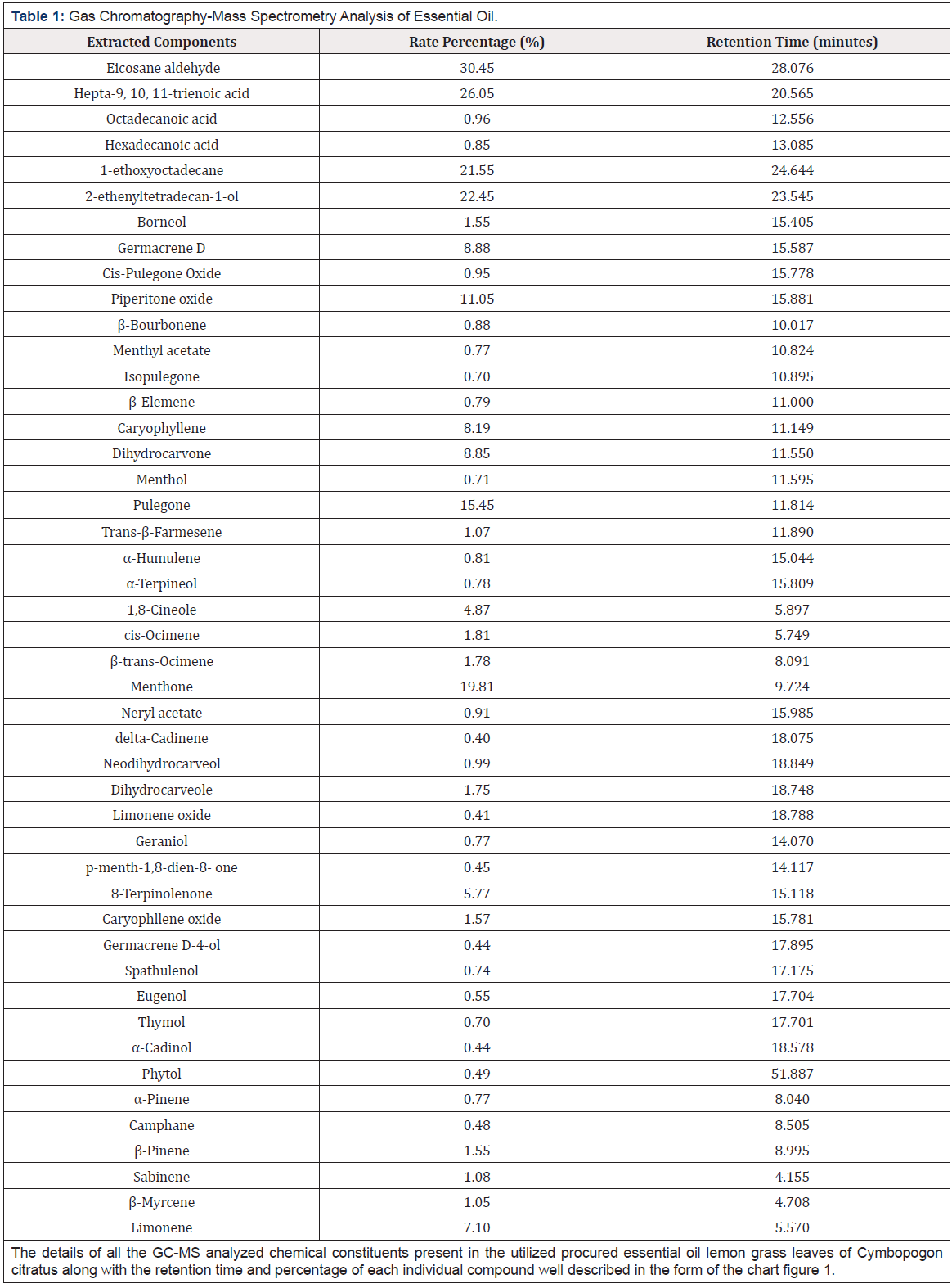
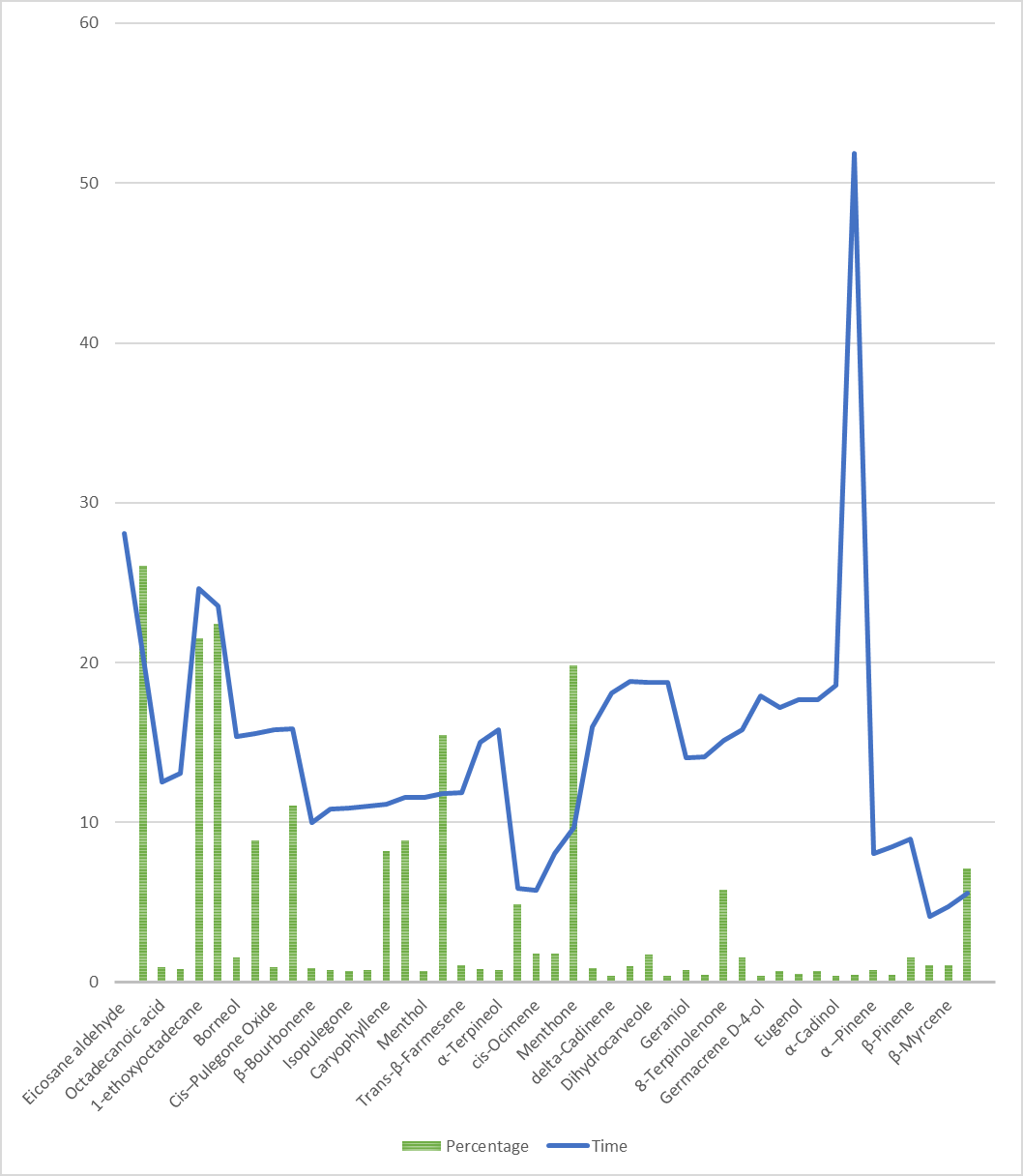
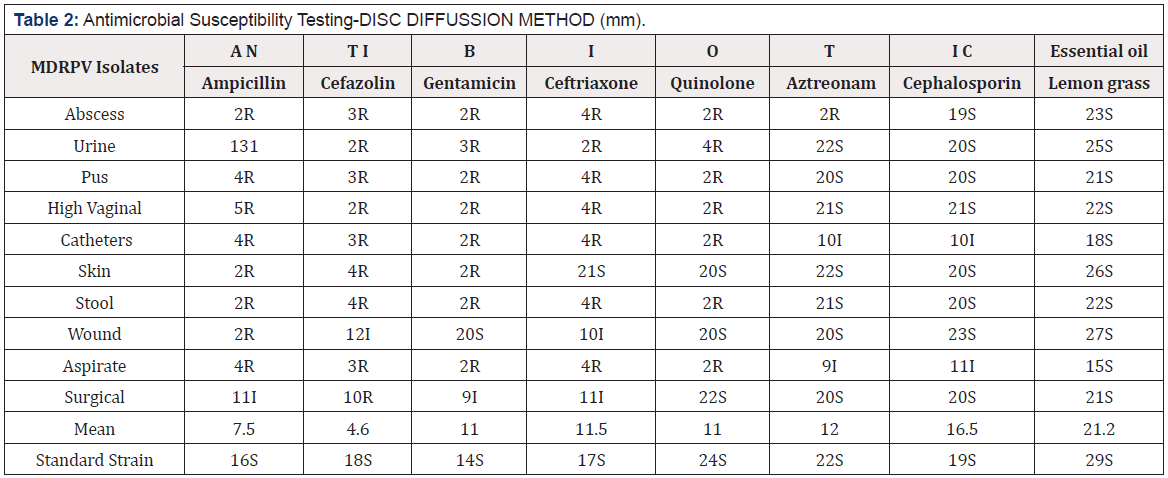

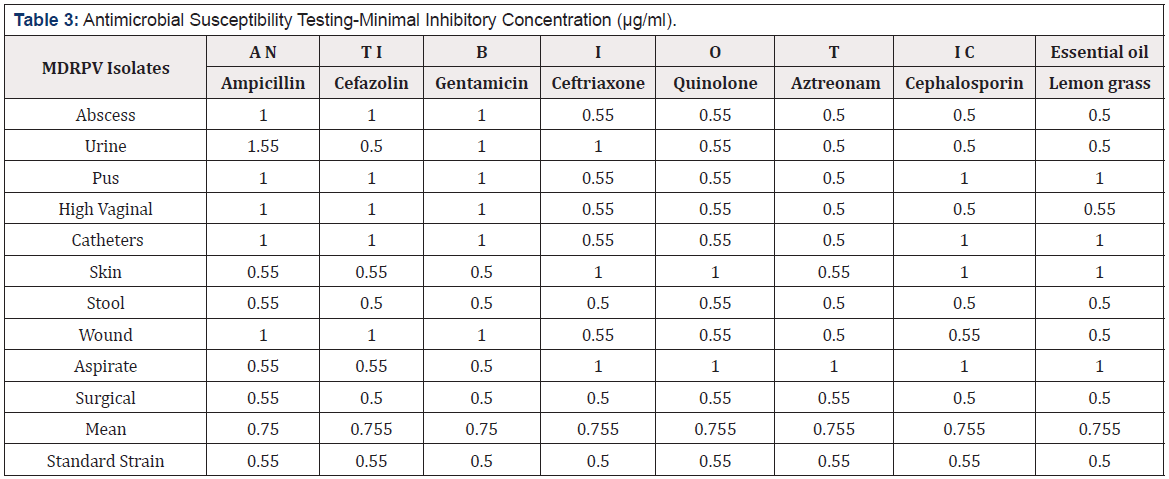
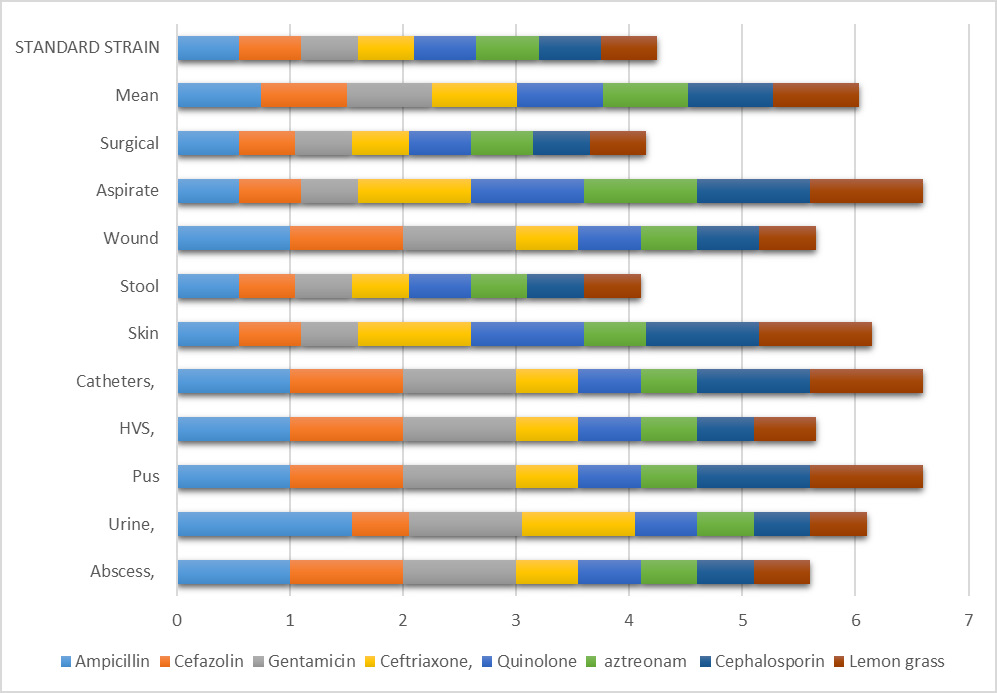

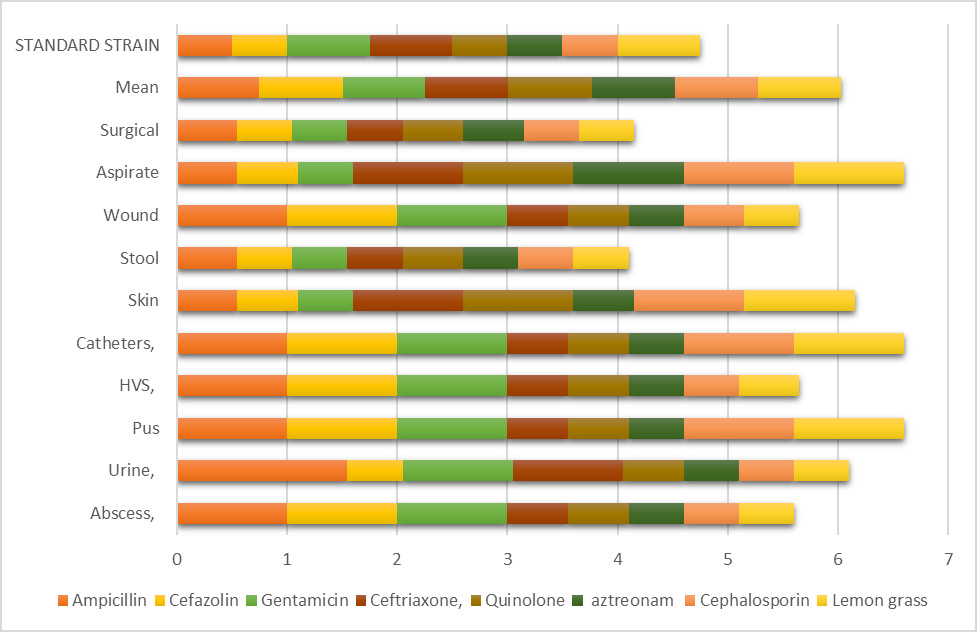


 We use cookies to ensure you get the best experience on our website.
We use cookies to ensure you get the best experience on our website.